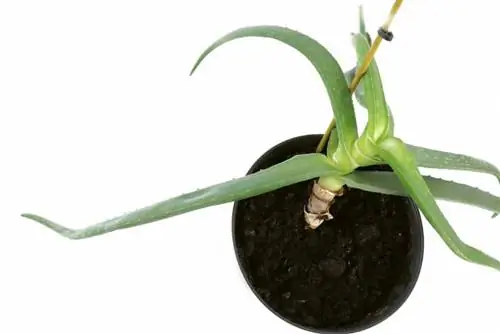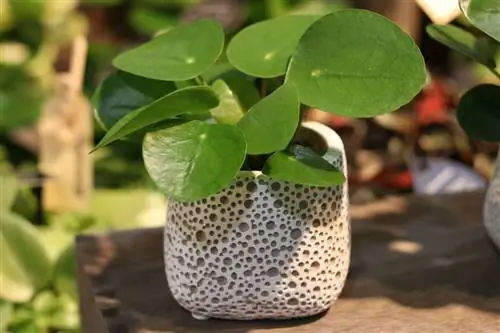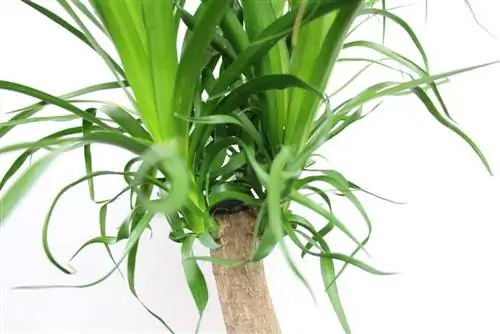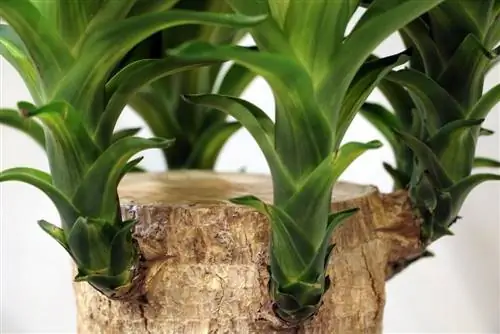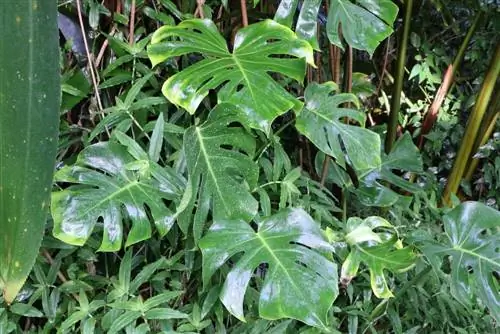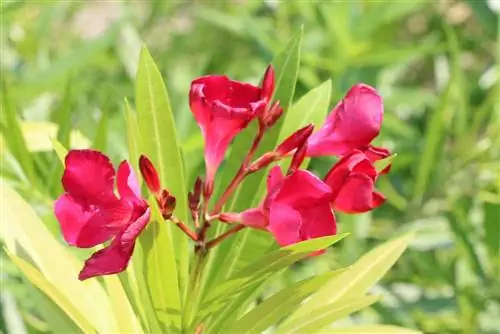- Author admin [email protected].
- Public 2023-12-17 03:39.
- Last modified 2025-01-24 12:45.
If you want to have new plants without paying for them, you can achieve this goal through leaf cuttings. Propagating through cuttings is easily possible with certain types of plants, including many summer flowers, hardy perennials and houseplants. The resulting plants have the same properties as the mother plant. It is important to proceed carefully so as not to injure the leaves, otherwise rot may occur.
Leaf cuttings
In general, leaf cuttings are perfect for propagation when seeds are not available. This method is also suitable if sowing is very difficult because the plant variety is a cold germinator. With aloe vera, you don't even need a whole leaf; in this case, a part of the leaf is sufficient. The prerequisite for propagating with leaf cuttings is a he althy and robust mother plant. If it is a diseased plant, it is not advisable to propagate it through leaf cuttings, as this will transmit bacteria and viruses to the next generation of plants. In addition, this process is significantly more difficult if the mother plant is very woody. Furthermore, it can be said that the larger the cutting surface, the higher the risk of rotting on the cutting.
- Very easy method for propagation
- Cut off leaves during the growing season
- Not all plants are suitable for this
- Particularly good for plants with thick-fleshed leaves
- Ideal for aloe vera, begonias, lucky feathers, stonecrops and African violets
- Also suitable for carnivorous plants, rotary fruit, money tree and peperomias
- Threemaster's Flower and Busy Lieschen root quickly in 2-3 weeks
Tip:
In some plant species, the cuttings root very securely, but they always remain just rooted leaves. No shoots or flowers form whatsoever, this includes the porcelain flower, for example.
Propagate
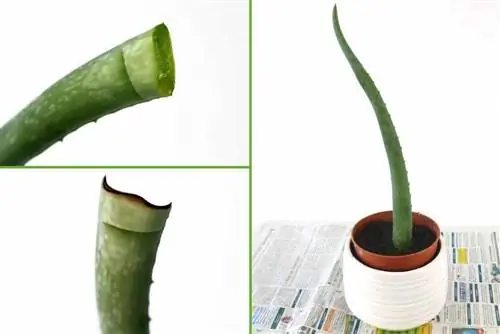
Since leaf cuttings can be very soft, they should be treated with care when propagating. They are also extremely susceptible to rot, so there should be no waterlogging in the planter. The behavior during growth varies greatly depending on the plant variety; this factor must be taken into account when proceeding. A very large number of leaf cuttings can usually be taken from a he althy mother plant and used for propagation. However, this should be done gradually so as not to weaken the respective plant unnecessarily. How quickly the plant develops roots and new leaves depends on the respective variety. With summer flowers it can happen relatively quickly, while with some houseplants it often takes several months until the first rhizomes develop. Over time, new leaves grow on this basis while the original leaf dies.
- Cut strong and he althy leaves, with or without stem
- Mother plant must be free of pests
- Use only clean, sharp and disinfected tools
- Do not use scissors to avoid bruising shoots and leaf tissue
- Then insert the leaf diagonally into the pot with soil
- First press a small hole into the plant substrate with a thin wooden stick
- Be careful not to bend the sheet
- The location should not be too cold and not too hot
- The ideal temperature is between 18-22° C
- A lot of light is good, but without strong midday sun
Tip:
If succulents are propagated with leaf cuttings, the interface should be slightly dried before it is placed in the intended location.
Planting substrate & watering
So that the leaf cuttings can feel comfortable right from the start, the composition of the planting substrate is extremely important. This should not be too firm to avoid waterlogging. Conventional garden soil from specialist retailers is very suitable for this. The planting substrate must never dry out completely, as the cutting needs a lot of water and will otherwise quickly wither. Therefore, the cut surface of the leaf must always be in contact with the soil in order to be able to absorb the necessary water. However, plants that require less moisture require drainage and a much lighter and sandier substrate. Cacti and succulents also require careful handling when watering.
- A humus-rich and slightly sandy substrate is well suited
- Soil should be free of peat
- Special potting soil is ideal
- Mix in a lot of sand for cacti and succulents
- Water vigorously after plugging in
- Water regularly afterwards, but not too much
- High humidity is optimal for propagation
- Cover the pot with plastic film
- Spray cutting with water mist daily
Rooting in a glass of water

Most plants can also be rooted in a glass of water, especially if it is just a single specimen. However, once larger quantities of leaves are used for propagation, planting directly into the soil is more effective. Plants with very sensitive roots are not suitable for this as they will suffocate in the glass of water. In this case, soil with a high sand content is required.
- Detach the leaf or stem
- Fill the glass with a little water
- Rainwater or still mineral water is ideal
- Calciferous tap water is too aggressive
- Only the end of the leaf cutting should be in the water
- Observe the root process
- When the first root tips appear, plant in soil

